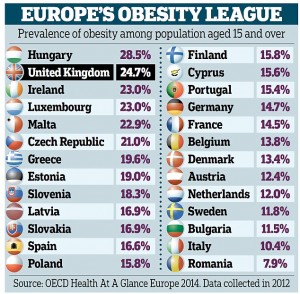Everyone can benefit from Physical Activity. Regular physical activity is one of the most important things you can do for your health. There are very few people whose health should stop them getting involved in suitable exercise and increasing their regular physical activity. It can help;
- Control your weight
- Reduce your risk of cardiovascular disease
- Reduce your risk for type 2 diabetes
- Reduce your risk of some cancers
- Strengthen your bones and muscles
- Improve your mental health and mood
- Improve your ability to do daily activities and prevent falls, if you’re an older adult
But how much should I do?
In order to get these health benefits the Irish Physical Activity guidelines recommend adults (aged 18–64) should undertake at least 30 minutes a day of moderate activity on 5 days a week (or 150 minutes a week).
It is important to remember that inactivity should be avoided – adults who participate in any amount of physical activity gain some health benefits. Remember the slogan some activity is better than none, more is better than some
Shorter bouts of activity can be accumulated to reach the guideline. These bouts should be at least 10 minutes duration. It is also important to vary your activity and activities that help strengthen your muscles should be added on 2 to 3 days per week.
Obesity is when a person is carrying too much body fat for their height and sex. A person is considered obese if they have a body mass index (BMI) of 30 or greater.
Today’s way of life is less physically active than it used to be. People travel on buses and cars, rather than walking, and many people work in offices, where they are sitting still for most of the day. This means that the calories they eat are not getting burnt off as energy. Instead, the extra calories are stored as fat.
Over time, eating excess calories leads to weight gain. Without lifestyle changes to increase the amount of physical activity done on a daily basis, or reduce the amount of calories consumed, people can become obese.
How common is obesity?
In 2011 the National Adult Nutrition Survey conducted by the Irish University Nutrition Alliance showed that 26% of men and 21% of women were obese. In the same year the National Longitudinal study of Children showed that 19% of 9 year olds were overweight and a further 7% were obese.
The number of overweight and obese people is likely to increase. The Foresight report, a scientific report used to guide UK government policy, has predicted that by 2025, nearly half of men and over a third of women will be obese.
Outlook
Obesity can cause a number of health problems, such as type 2 diabetes (a condition caused by too much glucose in the blood), and heart disease (when the heart’s blood supply is blocked).
Being overweight or obese can also shorten life expectancy (how long a person should live). In obese adults over 40 years of age, obesity can shorten life expectancy by 6-7 years.
Obesity is treated by losing weight, which can be achieved through a healthy, calorie-controlled diet and increased exercise. The lifestyle changes necessary for long-term weight loss can be challenging to achieve, but there is a wide range of support available.
Surgery can be used to treat people who are severely obese and have tried other methods of weight loss with no success. There are a variety of techniques, although these do carry risks and may not be suitable for everyone.
At A Glance Europe 2014 report shows 23 % of Irish adults are obese, compared with a European average of 16.7 per cent. Norway, Switzerland, Italy, Bulgaria, Sweden, the Netherlands, Austria and Romania all have obesity levels of less than 13% Only Hungary and the United Kingdom has higher rates of adult obesity than the Ireland at 28.5% and 24.7%.
Obesity is defined as having a body mass index of 30 or more, meaning the person’s weight is a danger to their health. BMI is calculated as weight in kilograms divided by the square of height in metres. A measure of between 18.5 and 25 is healthy.
Definition of obesity
Obesity can be measured in different ways. An easy way is to simply step on the scales and compare your actual weight with your ideal weight.
The most widely used way to measure your weight is to calculate your body mass index (BMI). This is your weight in kilograms divided by your height in metres squared.
- If your BMI is between 25 and 29.9, you are over the ideal weight for your height (overweight).
- If your BMI is between 30 and 39.9, you are obese.
- If your BMI is over 40, you are very obese (known as ‘morbidly obese’).
The BMI calculation cannot take into account if you are particularly muscular, or if you are going through puberty (when your body is still developing).
If you are concerned about any health issues it is important to contact your GP for advice.
Source: hse.ie
Useful Links
- Health A-Z: heart disease
- BMI Calculator
- Health A-Z: weight loss surgery
- Irish Heart Foundation
- Food Safety Authority of Ireland
- Irish Nutrition & Dietetic Institute, Ireland


